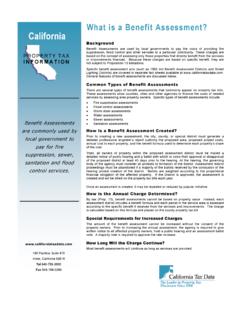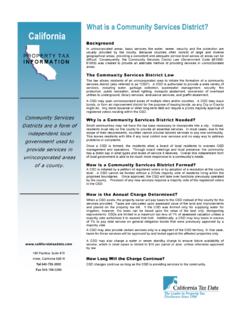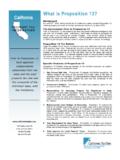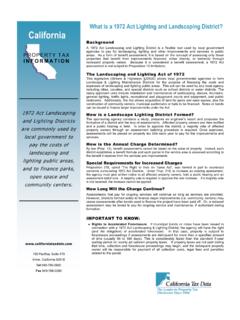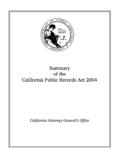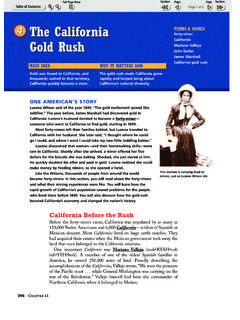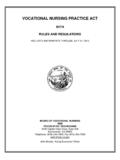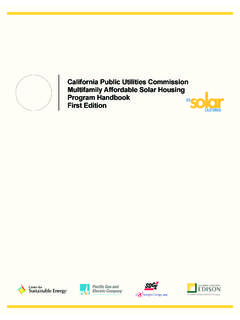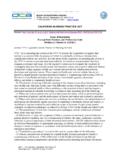Transcription of What is Proposition 13? California
1 Prior to Proposition 13, local agencies independently established their tax rates and the total property tax rate was the composite of the individual rates, with few limitations. On June 6th, 1978, nearly two-thirds of California s voters passed Proposition 13, reducing property tax rates on homes, businesses and farms by about 57%. The Environment Prior to Proposition 13 Prior to Proposition 13, the property tax rate throughout California averaged a little less than 3% of market value. Additionally, there were no limits on increases for the tax rate or on individual ad valorem charges. ( Ad valorem refers to taxes based on the assessed value of property.)
2 Some properties were reassessed 50% to 100% in just one year and their owners property tax bills increased accordingly. Proposition 13 Tax Reform Under Proposition 13 tax reform, property tax value was rolled back and frozen at the 1976 assessed value level. Property tax increases on any given property were limited to no more than 2% per year as long as the property was not sold. Once sold, the property was reassessed at 1% of the sale price, and the 2% yearly cap became applicable to future years. This allowed property owners to finally be able to estimate the amount of future property taxes, and determine the maximum amount taxes could increase as long as he or she owned the property.
3 Specific Features of Proposition 13 Proposition 13 initiated sweeping changes to the California property tax system. The primary changes are explained below. 1. One Percent Rate Cap. Proposition 13 capped, with limited exceptions, ad valorem property tax rates at one percent of full cash value at the time of acquisition. Prior to Proposition 13, local jurisdictions independently established their tax rates and the total property tax rate was the composite of the individual rates, with few limitations. 2. Assessment Rollback. Proposition 13 rolled back property values for tax purposes to their 1976 level.
4 3. Responsibility for Allocating Property Tax Transferred to State. Proposition 13 gave state lawmakers responsibility for allocating property tax revenues among local jurisdictions. Prior to Proposition 13, jurisdictions established their tax rates independently and property tax revenues depended solely on the rate levied and the assessed value of the land within the agency s boundaries. 4. Reassessment Upon Change of Ownership. Proposition 13 replaced the practice of annually reassessing property at market value with a system based on cost at acquisition. Prior to Proposition 13, if homes in a neighborhood sold for higher prices, neighboring properties might have been reassessed based on the newly increased area values.
5 Under Prop. 13, the property is assessed for tax purposes only when it changes ownership. As long as the property is not sold, future increases in assessed value are limited to an annual inflation factor of no more than 2%. 5. Vote Requirement for State Taxes. Proposition 13 requires any measure enacted for the purpose of increasing state revenues to be approved by a two-thirds vote of each house of the legislature. 6. Voter Approval for Local Special Taxes. Proposition 13 requires taxes raised by local governments for a designated or special purpose to be approved by two-thirds of the voters.
6 What is Proposition 13? California PROPERTY TAX INFORMATION 100 Pacifica, Suite 470 Irvine, California 92618 Tel 949-789-0660 Fax 949-788-0280
